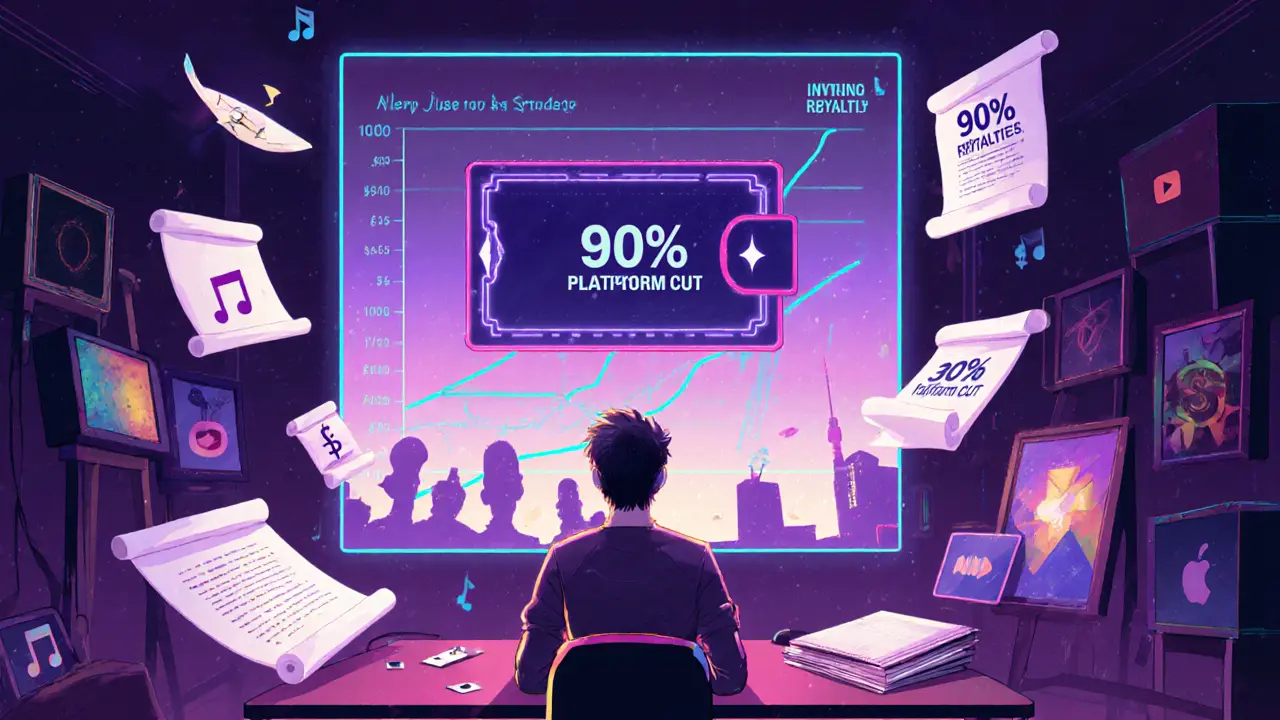NFT Royalties: How Creators Earn on Secondary Sales
When working with NFT royalties, a system that automatically routes a percentage of each resale price back to the original creator. Also known as digital art royalties, it has reshaped how artists monetize their work in the blockchain era.
The engine behind this system is the royalty smart contract, self‑executing code that enforces the royalty percentage on‑chain. These contracts require a compatible blockchain platform, such as Ethereum, Flow, or Solana, which provides the ledger for transparent tracking. Together they enable creator earnings, the revenue stream a creator receives every time the NFT changes hands after the first sale.
Key Elements of NFT Royalties
Understanding NFT royalties starts with the secondary market sales concept – any transaction where an NFT is bought or sold after its initial mint. Each of those sales triggers the royalty smart contract, which automatically calculates the agreed‑upon percentage and sends it to the creator's wallet. This automatic flow eliminates the need for manual invoicing and ensures creators keep earning as their work gains popularity.
Because the royalty percentage is baked into the contract, collectors know exactly what they’ll pay upfront. That clarity builds trust and encourages more active trading, which in turn boosts overall market liquidity. Platforms that support royalty enforcement also provide dashboards where creators can monitor earnings in real time, giving them actionable insight into which pieces are performing best.
Different blockchains handle royalties in slightly different ways. Ethereum’s ERC‑721 and ERC‑1155 standards include optional royalty fields, while Flow uses its own Cadence scripts to achieve the same result. Regardless of the chain, the core idea stays the same: a programmable rule that locks the creator’s share into every future transaction.
From a legal standpoint, royalty smart contracts can be seen as a digital version of traditional licensing agreements. They encode the royalty rate, define payout triggers, and often include fallback mechanisms if a marketplace doesn’t support the royalty standard. This hybrid of code and contract reduces disputes and simplifies compliance for both creators and platforms.
For creators, the biggest benefit is predictable, recurring income. Instead of a one‑off payment at mint, royalties turn each resale into a micro‑sale that adds up over time. Artists can even experiment with tiered royalty structures – for example, a higher rate for the first few resales that tapers off later, encouraging early adopters while still rewarding long‑term collectors.
Collectors also gain value. Knowing that their purchase contributes to the creator’s ongoing success can make the acquisition feel more meaningful. Some marketplaces display the royalty percentage prominently, turning it into a selling point that differentiates their platform from competitors that ignore creator compensation.
However, royalty enforcement isn’t universal yet. Some off‑chain marketplaces or peer‑to‑peer trades can bypass the smart contract, resulting in lost earnings for creators. That’s why the ecosystem is pushing for standardized royalty support across all major platforms, ensuring a level playing field.
In practice, setting up royalty smart contracts is straightforward. Most NFT minting tools let you input a royalty percentage directly in the creation flow. Once the contract is deployed, the blockchain handles the rest. Creators should double‑check that the marketplaces they plan to list on respect the royalty settings, and consider using royalty‑focused platforms for maximum payout.
Below you’ll find a curated collection of articles that dive deeper into these topics – from step‑by‑step guides on claiming airdrops that involve royalty mechanisms to analyses of how different blockchains implement royalty standards. Explore the links to sharpen your understanding and start leveraging NFT royalties for sustainable earnings.
The blockchain creator economy lets artists, musicians, and writers earn more by cutting out middlemen. With NFTs and smart contracts, creators keep up to 90% of revenue and earn royalties forever. Here's how it works - and why it's exploding globally.
MoreLearn how NFT royalties let creators keep ownership and earn ongoing payments, the tech behind them, platform differences, and future trends.
More
